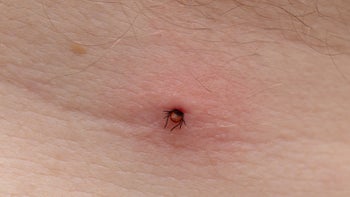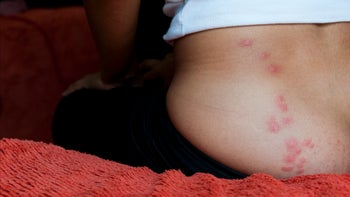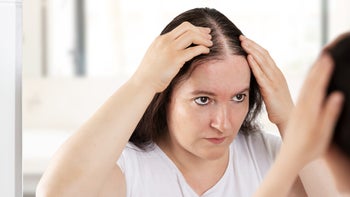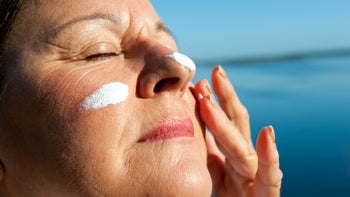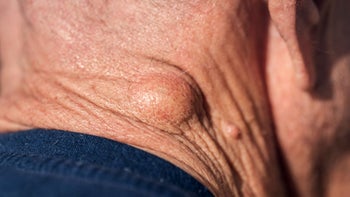
When to Use Retinol and How to Add It to Your Skin Care Routine — According to Dermatologists
Key takeaways:
Retinol is a naturally occurring form of vitamin A. It’s in many skin care products.
Retinol can help with acne breakouts and can reduce signs of skin aging.
It’s common to get skin irritation when you first start using retinol or other retinoid products.
If you’re new to retinol, use a lower strength, start slowly, and build up as tolerated
Table of contents

Retinol is vitamin A, and it’s an active ingredient in many skin care products. Retinol benefits the skin in many ways — from preventing acne breakouts and enhancing skin turnover to reducing the signs of skin aging.
If you’re new to a skin care routine, it’s easy to feel overwhelmed by all of the options, ingredients, formulations, and price tags. But know this: According to the science, there are only five skin care ingredients that matter for skin health: retinol, sunscreen, hyaluronic acid, vitamin C, and alpha hydroxy acids.
So if you’re considering adding retinol to your skin care routine, you’re in the right place. Here’s our beginner’s guide to retinol, why everyone should consider it, and how and when to use it.
Search and compare options
What is retinol?
Retinol is vitamin A that occurs naturally in the body and in foods. It’s also an added ingredient in many over-the-counter (OTC) skin care products. To have an effect, retinol has to be converted to its active form — retinoic acid. This happens in the body, after you apply retinol to the skin.
How is retinol different from retinoic acid?
Pure retinoic acid, like Retin-A, is about 20 times stronger than retinol. It’s only available by prescription. Retinoic acid comes as a cream, like tretinoin (Retin-A), or as a pill, like isotretinoin (Accutane).
How is retinol different from retinoids?
Retinoid is an umbrella term for many chemical compounds related to vitamin A (retinol). Retinoids can be OTC or prescription, and they come as creams or pills.
Examples of prescription retinoids are:
Adapalene (Differin)
Tazarotene (Avage, Tazorac)
Trifarotene (Aklief)
Healthcare professionals prescribe retinoids for conditions like acne, hyperpigmentation, and psoriasis. There’s also a lower-strength, OTC version of adapalene called Differin Gel.
Thinking about using retinol? Explore the key ways in which retinol benefits your skin and complexion.
Retinol vs. Retin-A for acne: Find out how these two popular creams work, and which one is better at fighting pimples.
Anti-aging products at any age: Learn about essential tips for graceful aging, including which products to use through your 40s and beyond.
In general, retinol is not as strong as Retin-A or other prescription retinoids. But when it comes to “antiaging” benefits, retinol may work just as well and cause less dryness, redness, and flaking. Retinol comes in different forms in OTC products. Here are some ingredients to look for when choosing a retinol:
Retinaldehyde (also called “retinal”)
Retinyl esters
Retinyl propionate
How does retinol work?
Retinol affects the skin in a few different ways, which is why it can treat so many conditions. Retinol works by:
Exfoliating the skin, which unclogs pores and replaces old skin cells with new ones
Boosting collagen production, which improves fine lines and wrinkles
Reducing skin pigmentation (called melanin), which improves dark spots and evens out skin tone
Read more like this
Explore these related articles, suggested for readers like you.
Who should use retinol?
If you’re dealing with acne or worried about premature aging, adding a retinol to your skin care routine may be a great option for you. But, retinol can help with much more. Here are the main reasons retinol is good for your skin.
Retinol for acne
Retinol and prescription retinoids are very effective treatments for acne. If you have mild acne — like a few whiteheads, blackheads, or pimples — an OTC retinol may be a good option for you. For more severe acne, you may need a prescription-strength retinoid. Retinol is often used along with other acne medications, like a face wash that has benzoyl peroxide or salicylic acid.
Retinol for signs of aging
No matter your age, retinol can reverse many of the signs of aging. Retinol reduces fine lines and wrinkles, improves skin tone and texture, and helps make skin firmer and more supple.
Retinol for pores
When pores get clogged with dead skin cells and oil, they become larger and more noticeable. OTC retinol can help unclog pores, making them appear smaller and smoothing out your skin. For more serious clogged pores (like blackheads), a stronger retinoid is more effective.
Retinol for dark spots
Whether you have dark spots caused by sun damage or another form of hyperpigmentation, retinol can help. Retinol slows the production of melanin, the main pigment in the skin. Over time, this leads to less noticeable dark spots and more balanced skin tone.
Retinol for psoriasis
Psoriasis is a chronic autoimmune skin condition that causes your skin to grow too fast. This leads to thick, rough skin patches that can be itchy and painful. Prescription strength retinoids treat psoriasis by slowing down skin growth and thinning out those skin patches.
Retinol for stretch marks
Stretch marks are those red, purple, or brown lines that can form on places like your belly and thighs. They happen after times of rapid growth or weight gain (like pregnancy), and they can be hard to get rid of. Some small studies have shown that using tretinoin cream (a prescription retinoid) can help make stretch marks smaller and less noticeable.
What age should you start using retinol?
There are no set rules on how old you should be to use retinol. For its skin aging benefits, you can start to use it in your 20s as a preventive step. If you’re using it for mild acne, you can use it even younger.
Keep in mind that while OTC retinol can help mild acne, many people with breakouts will need a prescription-strength retinoid cream. These are FDA approved for ages 12 and up, but dermatologists sometimes use them off-label in children under 12 years old.
What order should you apply retinol in your skin care routine?
Retinoids should only be used at night because light and air deactivate some types.
In general, it’s best to apply retinol right after cleansing your face and after your skin has completely dried. After the retinol, apply a moisturizer. If your skin is getting irritated by the retinol, you can also do a retinol “sandwich” — apply retinol in between two layers of moisturizer.
If you’re also using a serum or other cream, apply these after the retinol and before the moisturizer.
Can you use retinol every night?
Retinol and other retinoids work best if you use them daily. But when you first start out, you should begin using retinol every 1 or 2 days. This helps your skin get used to it, and avoid irritation. After a few weeks, slowly work your way up to using it every night.
How to use retinol
Starting a new routine can feel overwhelming. But we have you covered with eight tips to keep in mind as you incorporate retinol into your skin care routine.
1. Always start slowly
It can take time for your skin to get used to a retinoid. Start by applying it once or twice a week, and always at night. As your skin adjusts, you can work your way up to using it nightly. If your skin gets red, dry, or flaky, you may be moving too fast.
Try using it less often until these side effects resolve, and then increase slowly. Once you’re comfortable with nightly use, you can consider increasing the strength.
2. Use only a pea-sized amount
When it comes to retinoids, a little bit goes a long way. In general, a pea-sized amount is enough for your whole face. Dab it on your forehead, nose, cheeks, and then your chin. Gently rub it in to distribute the product evenly.
3. If you’re prone to acne, beware of ‘purging’
Around 20% of people who use retinoids get a flare during the first few weeks after starting it. But don’t give up. It can take up to 12 weeks to see full results.
4. Stick to mild, gentle skin care products
Retinoids can be irritating, especially at first. It’s best to avoid using them with other sources of irritation, like:
Benzoyl peroxide
Salicylic acid
Alpha hydroxy acids
Scrubs
Exfoliators
5. Moisturize your skin
Retinoids can cause dryness and irritation (retinoid dermatitis). Using a moisturizer can help. If your skin is dry or sensitive, you can apply your retinoid on top of a moisturizer.
6. Protect your skin from ultraviolet (UV) rays
Retinoids can make your skin more sensitive to burning, even if you only apply it at night. Avoid tanning beds. Apply a broad-spectrum sunscreen daily. It should be SPF 30 or higher and cover UVA and UVB rays. Reapply frequently when outside.
7. Stop your retinoid before any facial procedure
Retinoids increase your skin’s sensitivity. It’s best to stop using them for 5 to 7 days before waxes, peels, lasers, and other facial procedures.
8. Don’t use a retinoid if you’re pregnant or could be pregnant
Most experts advise against using a retinoid during pregnancy or while you’re breastfeeding. For acne, alternatives include OTC alpha hydroxy acids (look for ingredients like glycolic or lactic acid) or prescription-strength azelaic acid (Azelex).
What strength retinol should I use?
The strength of retinol and retinoids varies across different OTC and prescription products. Here’s how they stack up from weakest to strongest.
OTC retinol products range from 0.01% to 1%.
OTC adapalene 0.1% (a retinoid available without a prescription)
Prescription-strength retinoids range from tretinoin (0.01%) to tazarotene (0.1%).
In general, it’s best to start with a low-strength OTC retinol, like 0.1% or 0.2%, especially if you have dry or sensitive skin, or you’ve never used retinoids before. Once your skin is used to that nightly, you can slowly increase the strength as needed.
Retinol serum vs. cream: How to choose
When starting a retinol, it’s important to choose a low-strength version in a formulation that works for your skin type. Retinol and retinoids come in many different formulations, like retinol creams, serums, and lotions. Serums tend to be thinner and absorb quickly. But unlike creams and lotions, serums don’t provide any moisturization.
Here are the best retinol formulations for different skin types.
Skin type | Best retinol formulation |
Oily or prone to acne | Gel or lotion |
Dry | Serum, cream, or oil |
Combination | Vary by season: serum or cream for winter, lighter lotion for warmer months |
Frequently asked questions
Tretinoin is not technically a retinol — it’s a synthetic derivative of retinol. This means it’s a compound created in the lab to be similar to retinol. Tretinoin and retinol are both considered retinoids since they’re both related to vitamin A.
Yes. Vitamin C and retinol both have “antiaging” effects, and using them together maximizes their benefits. The best way to combine them is to use vitamin C serum in the morning and retinol at night.
Yes. Hyaluronic acid hydrates the skin and helps maintain a healthy skin barrier. These effects can help balance irritation caused by retinol. You can use hyaluronic acid right after retinol, or even before, if you have very dry or irritated skin.
Yes. Niacinamide also helps reduce fine lines and dark spots. Combining it with retinol can enhance its benefits against signs of skin aging. Start by applying niacinamide after your retinol once every few days to make sure your skin doesn’t get irritated. Then slowly increase to nightly.
Yes, but with caution. Both retinol and salicylic acid exfoliate the skin and cause irritation, especially for people with sensitive skin. To minimize side effects, use salicylic acid in the morning or alternate it at night with retinol. Pay attention to how your skin reacts. At the first sign of irritation — like redness or flaking — back down on both and use them more slowly.
The bottom line
Retinol and other retinoids help with acne breakouts, dark spots, sun damage, fine lines, and other signs of aging. It can be intimidating to know how to start using it — especially if you’re new to skin care. But it’s a key ingredient in most skin care routines.
The most common side effect is skin irritation, especially when you first start using it. For best results, take it slow, use gentle skin care products, and protect your skin from the sun.
Why trust our experts?



References
American Academy of Dermatology Association. (n.d.). Is any acne treatment safe to use during pregnancy?
Bisset, D. L., et al. (2005). Niacinamide: A B vitamin that improves aging facial skin appearance. Dermatologic Surgery.
Bouloc, A., et al. (2015). A double-blind randomized study comparing the association of Retinol and LR2412 with tretinoin 0.025% in photoaged skin. Journal of Cosmetic Dermatology.
Hague, A., et al. (2017). Therapeutic targets in the management of striae distensae: A systematic review. Journal of the American Academy of Dermatology.
Kilgman, A. M., et al. (1969). Topical vitamin A acid in acne vulgaris. Archives of Dermatology.
Kim, B., et al. (2003). The mechanism of retinol-induced irritation and its application to anti-irritant development. Toxicology Letters.
Kraft, J., et al. (2011). Management of acne. Canadian Medical Association Journal.
Mukherjee, S., et al. (2006). Retinoids in the treatment of skin aging: An overview of clinical efficacy and safety. Clinical Interventions in Aging.
Ortho-McNeil Pharmaceutical. (2002). Retin-A (tretinoin) cream, gel, liquid [package insert].
Parikh, S. A., et al. (2014). Common use of prescription off-label acne therapy in children younger than 12 years old. Pediatric Dermatology.
Zasada, M., et al. (2019). Retinoids: Active molecules influencing skin structure formation in cosmetic and dermatological treatments. Advances in Dermatology and Allergology.







